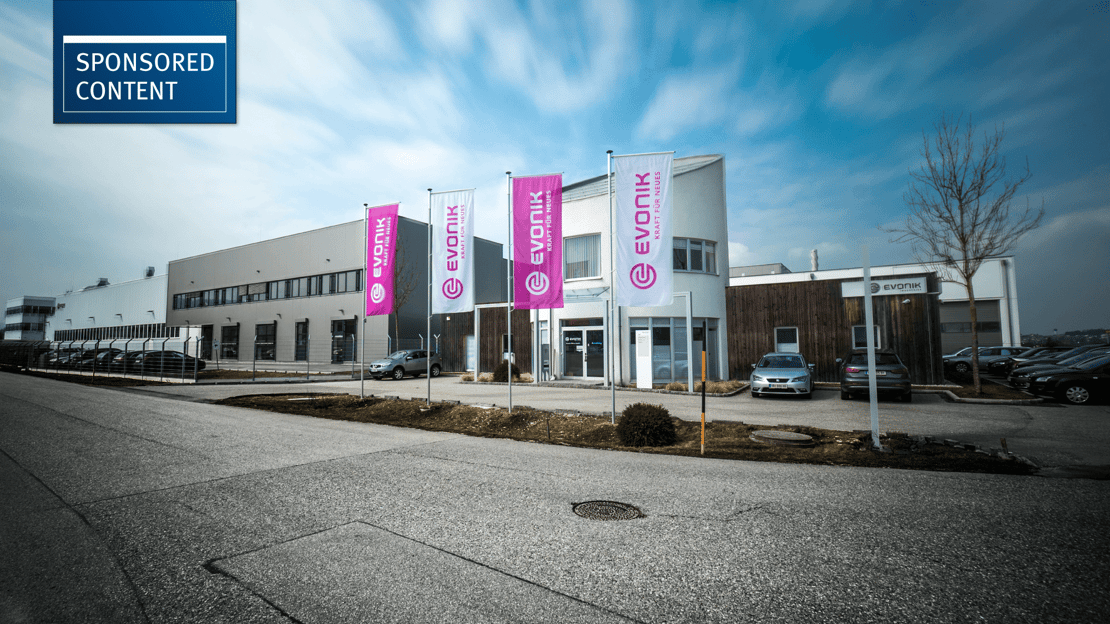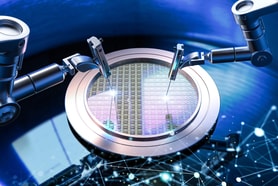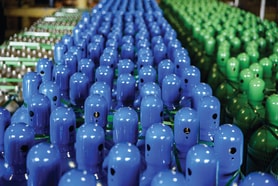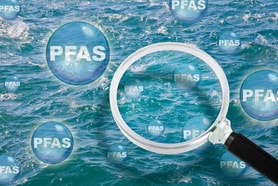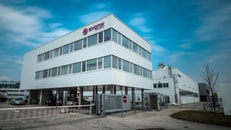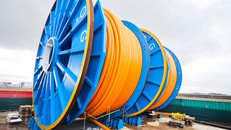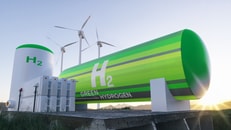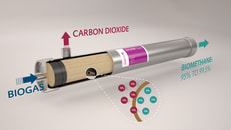Driving a sustainable gas economy with leading membrane technology
Evonik is committed to driving the transition of today’s conventional energy supply to a sustainable gas economy of tomorrow. The specialty chemical company believes the energy mix of the future will be biogas, green hydrogen, and further synthesis products.
The Germany-based membrane technology leader already works on expanding its product portfolio and production capacities for this transformational market growth.

©Evonik | Illustrating Evonik’s vision of a sustainable gas economy of the future.
The oil and gas industry is facing major challenges due to new regulations with respect to global climate protection efforts. Energy companies are desperately looking for renewable products and solutions to reduce emissions, whether by increasing the efficiency of plant operations or by improving the utilisation of by-products generated during oil and gas production. This does not only demand new materials and processes to improve existing technologies, but these must also be provided in a way that can easily be implemented in existing production chains and plants.
Renewable natural gas (RNG), also called biomethane, is a crucial part of the global energy transition effort. Along with energy from solar and wind, which is partially converted to hydrogen, RNG is a non-fossil high energy molecule and can be used to lower the overall carbon emissions in, for example, natural gas-fuelled applications.
Making RNG involves the repurposing of organic waste to produce clean energy. Organic waste used to make RNG comes from many sources such as landfills, wastewater treatment plants, animal manure, restaurant waste and more. Decomposing organic waste generates biogas, a mixture of mainly methane and carbon dioxide (CO2).
Leading membrane-based technology for biogas upgrading
Biogas cleaning with membranes is the leading technology for gas upgrading. In order to use this gas as a source of decarbonisation, the gas – called biogas – needs to be collected from decomposing organic waste sources, cleaned up and upgraded.
Today, there are five gas upgrading processes to clean the biogas: membranes, pressurised water scrubbing, cryogenic, pressure swing adsorption (PSA) and amine scrubbing. Of these technologies, membrane separation leads all technologies in total installed capacity in North America and Europe, according to BiogasWorld’s Biomethane Market Intelligence Report for 2021.

©Evonik | The SEPURAN® Green membrane for efficient upgrading of biogas into high purity RNG, or biomethane, and Bio-CO2.
With over 900 global reference installations, Evonik is the market leader with its SEPURAN® Green membranes. These have been found to be a proven and easy solution to upgrade biogas. With modern hollow-fibre technology, Evonik’s membranes can efficiently separate and purify methane from carbon dioxide in the incoming biogas stream. Using a patented three-stage process, methane recoveries of over 99.8% can be achieved. This process presents the opportunity for a highly efficient solution with low energy consumption.
The secret of producing a good membrane is to be in control of the entire process. And Evonik is a backward-integrated manufacturer of highly selective hollow-fibre gas separation membranes. The specialty chemicals company has drawn on its expertise in polymer chemistry and adjusts key membrane properties already at the development stage of the base material – a high-performance polymer – to produce particularly selective and robust membranes that can withstand extreme pressures and temperatures.
Furthermore, Evonik produces its membranes using renewables. Green electricity from wind, water, and biomass has been a key energy source for the production facility for years. Since the beginning of 2022, the specialty chemicals company has also been meeting 100% of its gas requirements with biomethane from regional production. By switching to an environmentally friendly energy supply, Evonik is reducing its direct annual CO2 emissions in Austria by around 4,000 metric tons.

©Evonik | Dr. Goetz Baumgarten, Head of the Membranes Innovation Growth Field at Evonik.
“Having developed and established the biogas industry in close cooperation with our partners, we are now establishing our membrane technology as the new standard for efficient gas separation in demanding nitrogen or hydrogen applications,” says Dr. Goetz Baumgarten, Head of the Membranes Innovation Growth Field at Evonik.
Hydrogen is an important building block for the energy transition
To date, the main user of hydrogen has been the chemical industry, which needs it for various synthesis processes. More than half of the globally produced hydrogen is processed into ammonia, primarily for fertiliser. Refineries also need huge amounts of hydrogen, for example to crack and desulfurise petroleum products.
As the world continues to transition to sustainable energy, the demand for hydrogen is climbing. The hydrogen economy is undergoing a transition away from the current solely mature use of hydrogen as a chemical feedstock to emerging uses as a clean energy solution for transportation, industrial energy generation, building heat and power, power generation and buffering. Demand for hydrogen energy is a must for countries to meet their global pledges for Net Zero emissions by 2050.
According to the International Energy Agency (IEA), demand for hydrogen is expected to increase to reach 130 million tonnes in 2030 – up from the 2021 demand of 94 million tonnes. This reflects the growth of the hydrogen sector and the adaptation of hydrogen as a fuel source for the industrial and private sectors.
Green is the colour of hope
In today’s hydrogen production, steam reformers cover more than 95% of the worldwide demand for hydrogen. They use heat, pressure and catalysts to produce hydrogen from fossil sources such as natural gas. This process generates around 10 tonnes of carbon dioxide per tonne of hydrogen.
According to the IEA, in recent years hydrogen production has generated around 830 million tonnes of CO2 emissions worldwide per year. That’s more than the emissions of the UK, France, and the Czech Republic taken together. This is not a good balance sheet for hydrogen, the beacon of hope for advocates of an energy transition.
Hydrogen can, however, be produced directly from water by means of electrolysis. The principle is simple and well known: a voltage applied between two electrodes splits water into its chemical components, oxygen and hydrogen. In a fuel cell, this process is reversed: hydrogen and oxygen from the air react without combustion to form water. The reaction generates an electric current and some waste heat. Within this cycle, hydrogen is the storage medium for electrical energy. This potentially climate-neutral cycle, which is expected to spur the energy transition, is now attracting large amounts of attention and capital.
Using the existing natural gas grid for smart hydrogen transportation
One of the biggest challenges today for renewable energies to be delivered to consumers, is the fact that renewable energies are not always at a place where they are needed the most, because the concentration of industries or individuals is elsewhere.
“The idea is to convert that energy at the point of source into green hydrogen and transport it to the consumers. For this, we will need an infrastructure of pipelines,” says Caroline Justet, Business Growth Executive at Strohm B.V. Evonik’s polyamide 12 is the high-performance material of choice for flexible pipelines which can be used for green hydrogen transportation. How it works is demonstrated by the GET H2 Nukleus project. Germany’s first publicly accessible hydrogen network is due to supply increasing quantities of green hydrogen to industrial companies in Lower Saxony and North Rhine-Westphalia from late 2024 onwards.
Here we have a challenge: to leverage the existing infrastructure to maximum effect. Until a new pipeline network for green hydrogen is installed, existing pipeline networks could be used to efficiently transport green hydrogen over long distances and deliver it to end points along this infrastructure. From there, it could be fed into industrial applications or provide a source of energy. For this to happen, however, the hydrogen must be efficiently separated from the natural gas blend at the point of extraction.
Linde and Evonik Industries already offer a fully integrated, holistic solution that brings together various technologies for hydrogen separation. This solution combines PSA, a technology in which Linde has decades of experience, with Evonik’s hollow-fibre membrane technology to deliver hydrogen at purity rates of up to 99.9999%.
“What we need now is smart transformational technology,”points out Tobias Keller, Head of Adsorbtion & Membrane Plants at Linde Engineering.

©Linde | A real-scale demo plant at the chemical park at Dormagen, Germany, showcasing a fully integrated, holistic solution combining Linde’s PSA with Evonik’s membranes to extract hydrogen from natural gas pipeline networks.
New membrane production plant supports market transformation
In the clean energy landscape, membrane-based separation technology will play a crucial role to enable energy transition, whether to clean biogas, to make hydrogen, or to extract hydrogen from the gas grid.
Evonik is committed to a positive contribution to the many facets of the sustainable gas economy. Doing so, the specialty company has started up a new hollow-fibre spinning plant for the production of gas separation membranes in Schörfling am Attersee in Austria (pictured below). The new production capacity enables the company to meet the continuing strong demand for SEPURAN® membranes in biogas, nitrogen, hydrogen and natural gas applications.
“The global gas market has confidence in our membrane technology. With the capacity expansion, we are sending an important signal to our customers and partners of Evonik’s commitment to helping them accelerate the energy transition towards a sustainable gas economy,” says Baumgarten.
From start-up to technology leader within a decade Evonik bundles its membrane activities into one of its six innovation growth fields. Within a decade, the company has become a global technology leader for gas separation membranes. ©Evonik | Evonik Fibres GmbH, Schoerfling, in Attersee, Austria. SEPURAN® hollow-fibre membranes are extremely efficient for separating gases such as methane (CH4), nitrogen (N2), and hydrogen (H2) from gas mixtures. The advantages of Evonik’s membrane technology include a more precise separation of the gases and higher productivity. SEPURAN® N2 membranes for efficient nitrogen production are used, for example, for inerting airplane fuel tanks. SEPURAN® Noble membranes extract the hydrogen transported through natural gas pipelines from the CH4/H2 gas mixture at specific points at the H2 gas withdrawal points. SEPURAN® NG membranes enable efficient processing of natural gas from sources with high CO2concentration. SEPURAN® Green membranes enable efficient biogas processing from organic waste and circular sources.

